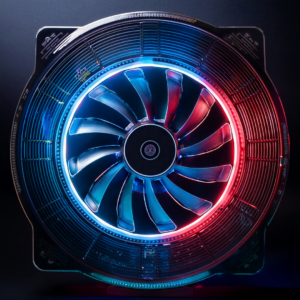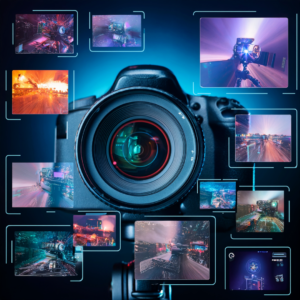The Reality of the Stream: A Comprehensive Guide to Pursuing a Twitch Career
The allure of Twitch streaming is undeniable. In recent years, the platform has exploded in popularity, becoming synonymous with gaming culture and live interactive entertainment. For many, the dream is compelling: turn a passion for gaming, art, music, or simply connecting with others into a full-time profession, broadcasting from home and building a dedicated community. However, beneath the surface of highlight reels and viral clips lies a complex and demanding reality. Pursuing streaming as a career requires navigating a landscape fraught with intense competition, financial uncertainty, technical challenges, and significant mental health considerations. This report provides a comprehensive, data-driven overview for aspiring streamers, examining the potential rewards against the inherent difficulties to help chart a realistic course in this dynamic digital arena.
1. The Streamer Dream vs. The Digital Grind: Weighing the Pros and Cons
Before embarking on a streaming journey with career aspirations, it’s crucial to weigh the widely perceived benefits against the often-underestimated drawbacks. The appeal is strong, but the challenges are significant and require careful consideration.
The Allure (Pros): What Makes Streaming Appealing?
Several factors contribute to the attractiveness of a streaming career:
- Flexibility & Autonomy: A primary draw is the freedom associated with being one’s own boss. Streamers can potentially set their own hours, control their workload, and escape the traditional 9-to-5 structure. This entrepreneurial appeal extends to the ability to work from virtually anywhere with a stable internet connection, offering a level of geographical freedom many jobs lack.
- Passion Monetization: The opportunity to earn a living directly from a hobby or passion, particularly gaming, is a powerful motivator. Transforming something one loves into a source of income can provide deep intrinsic satisfaction and drive.
- Community & Connection: Streaming offers a unique platform for building a dedicated community around shared interests. Successful streamers often foster strong bonds with their audience, creating spaces for interaction, friendship, and mutual support. For some, this sense of belonging and connection can be profoundly rewarding, even leading to feelings of being appreciated for one’s authentic self.
- Self-Expression & Reputation Building: The platform serves as a stage for self-expression, allowing creators to share their personality, opinions, and skills with a potentially wide audience. This process enables the building of a personal brand and the establishment of a reputation or expertise within a specific niche, which can foster trust and credibility.
- Potential Income Streams: The possibility of diverse income streams, including subscriptions, viewer donations (Bits), ad revenue, and sponsorships, fuels the financial aspirations of many streamers. The idea of passive income, earning money even while not actively streaming (e.g., through VODs or recurring subscriptions), is also an attractive prospect. However, it is critical to understand that realizing this potential is statistically rare, a point explored later in this report.
The Harsh Realities (Cons): Challenges to Consider Before Diving In
Despite the appeal, the path of a professional streamer is fraught with significant challenges:
- Intense Competition & Saturation: The Twitch platform is incredibly crowded, with millions of active streamers vying for attention. This saturation makes discoverability a major hurdle; simply going live does not guarantee viewers will find a channel. Standing out requires considerable effort, strategic planning, and often a unique value proposition.
- Income Volatility & Financial Instability: Consistent, predictable income is the exception, not the rule. Earnings often fluctuate based on viewership, donations, and sponsorships, making financial planning difficult. There is no inherent safety net; streamers lack the guaranteed paycheck, paid leave, or severance protections of traditional employment. Data indicates the vast majority of streamers earn little to no money, highlighting the precariousness of relying on streaming for income.
- Lack of Benefits & Self-Employment Burdens: Operating as a self-employed streamer means bearing the full responsibility for taxes (including potentially high self-employment taxes), health insurance, retirement planning, and other benefits typically provided by employers. These administrative and financial burdens require discipline and knowledge often overlooked by those focused solely on content creation.
- Time Commitment & Repetitive Work: Success in streaming demands a significant time investment that extends far beyond live broadcast hours. Preparation, technical setup, content planning, promotion, social media management, community engagement, and administrative tasks consume substantial time. Furthermore, the nature of streaming, often involving playing the same game or creating similar content repeatedly, can lead to monotony and burnout.
- Isolation & Lack of Interaction: The solitary nature of streaming, often performed alone at a desk, can lead to feelings of isolation. Unlike traditional workplaces, there is typically limited face-to-face interaction with colleagues or team members.
- Online Harassment & Criticism: Streamers are frequently exposed to online negativity, including trolling, harsh criticism, bullying, and harassment. Developing emotional resilience and effective moderation strategies is crucial for navigating this challenging aspect of online visibility. The inherent difficulty in moderating live chats effectively remains an ongoing issue.
- Content Exclusivity & Platform Dependence: Twitch imposes a 24-hour exclusivity period on streamed content, limiting immediate repurposing on other platforms. Additionally, streamers are subject to Twitch’s commission structure, which can be substantial (e.g., a 50% base cut on subscriptions), creating dependence on the platform’s policies and revenue models.
- Initial Financial Investment: While starting can be low-cost, achieving a professional-quality stream often requires investment in hardware (PC, microphone, camera, lighting), software, and potentially marketing efforts like giveaways, which can represent a significant upfront cost.
The juxtaposition of these pros and cons reveals a fundamental tension. The dream of autonomy and monetizing passion clashes sharply with the reality of market saturation, financial precarity, and the significant burdens of entrepreneurship. Success demands not only creative talent and engaging personality but also business discipline, financial planning, technical aptitude, and considerable emotional resilience to navigate the inevitable criticism and potential isolation inherent in the role.
2. Climbing Mount Twitch: The Steep Path to Growth
For aspiring streamers, simply going live is only the first step on a long and arduous climb. Gaining visibility and building a sustainable audience on a platform saturated with millions of creators presents a formidable challenge. Viewers rarely stumble upon new channels by chance ; growth requires deliberate, strategic effort across multiple fronts.
The Discoverability Dilemma
The core challenge lies in discoverability. With over 7 million active streamers monthly and hundreds of thousands broadcasting concurrently , standing out is incredibly difficult. Platform algorithms may favor established channels, and the sheer volume of content means new streams can easily get lost. This lack of inherent visibility necessitates proactive strategies to attract and retain viewers.
Strategic Pillars for Growth
Building a successful Twitch channel typically involves a combination of the following strategies:
- Consistency is Non-Negotiable: Establishing and adhering to a regular streaming schedule is paramount. A predictable schedule helps potential viewers know when to find the stream, builds viewing habits within the audience, and signals a level of seriousness and commitment from the creator. Utilizing Twitch’s built-in scheduling feature can make this information easily accessible to followers.
- Finding Your Niche & Differentiation: In a crowded market, differentiation is key. This involves several considerations:
- Game/Content Selection: Balancing personal enjoyment with audience appeal is crucial. While authenticity dictates playing games one enjoys , strategic selection is often necessary for growth. Streaming highly saturated games (like the latest AAA releases) can make discovery almost impossible for new channels. Exploring older titles, indie games, or less-streamed niches can significantly improve the chances of appearing higher in browse categories and attracting viewers looking for specific content. Initially focusing on one main game or a specific genre can help build a core, dedicated audience who know what to expect. This presents a potential conflict: the drive for authenticity versus the need for strategic positioning. Streamers must navigate this tension, finding content that is both enjoyable and has a viable path to an audience.
- Unique Personality & Brand: Beyond content choice, a streamer’s personality is a major draw. Cultivating a unique style, whether it’s through humor, skill, educational content, or community interaction, helps attract and retain viewers. Building a memorable personal brand through a catchy username, consistent visual elements (logo, overlays), and a clear theme reinforces this differentiation. Authenticity remains vital; viewers can often detect insincerity.
- Thinking Outside the Box: Exploring unconventional content, such as unique hobbies or activities not commonly seen on Twitch, can carve out a distinct niche and attract a dedicated following.
- Networking & Community Building: Growth rarely happens in isolation. Building connections within the broader Twitch ecosystem is essential:
- Genuine Engagement: Actively participate in other streamers’ communities, including their Discord servers and live chats. The focus should be on building genuine relationships and friendships, rather than solely on self-promotion.
- Strategic Raiding: Ending streams by raiding another channel, particularly one of similar size or within the same niche, is a common and often appreciated practice that can lead to reciprocal support.
- Collaboration: Partnering with other streamers for co-streams or joint events can expose channels to new audiences and foster mutual growth.
- Leveraging Other Platforms (Content Diversification): Relying solely on live Twitch broadcasts for audience growth is often insufficient and inefficient. A multi-platform approach is increasingly necessary:
- Repurposing Content: Editing stream highlights, clips, or full VODs (Video On Demand) for platforms like YouTube, TikTok, Instagram Reels, and YouTube Shorts is crucial for reaching wider audiences. These platforms have different discovery algorithms and can serve as funnels, directing viewers back to the live Twitch channel.
- Social Media Promotion: Actively using platforms like Twitter and Instagram to announce streams, share clips, engage with followers, and interact with other creators is vital for building visibility and community.
- Audience Engagement & Retention: Attracting viewers is only half the battle; keeping them engaged is critical for building a community:
- Active Interaction: Constant engagement with the chat is key. Respond to messages, acknowledge viewers by name, ask questions, and foster conversation, even during periods with few or no viewers. Talking consistently ensures new arrivals immediately experience the streamer’s personality.
- Providing Value: Streams should offer value to the viewer, whether through entertainment, information (e.g., game guides), skill display, or simply a welcoming community atmosphere.
- Utilizing Platform Tools: Employing Twitch features like channel points, interactive alerts for follows/subs/donations, and polls can enhance engagement.
- Building a Hub: Creating a dedicated Discord server provides a space for the community to interact outside of live streams, strengthening bonds and facilitating communication.
The significant emphasis placed on networking, community building outside one’s own channel, and extensive off-platform content creation underscores a crucial point: thriving on Twitch today often means building a comprehensive personal brand across the digital landscape. Twitch becomes one component, albeit central, of a larger content ecosystem, with success frequently dependent on visibility and audience acquisition driven by efforts on YouTube, TikTok, Twitter, and other platforms. Growth is not a passive outcome of streaming; it is the result of active, strategic, multi-channel work.
3. By the Numbers: A Sober Look at Twitch Success Rates
While the dream of Twitch stardom captivates many, a realistic assessment requires confronting the stark statistical realities of viewership and income distribution on the platform. Success, particularly financial success sufficient for a full-time career, is achieved by only a very small fraction of creators.
The Viewership Pyramid
Twitch hosts a massive number of creators, with millions streaming each month. However, viewership is concentrated heavily at the top, forming a steep pyramid:
- The Broad Base: The overwhelming majority of streamers broadcast to very small audiences. While precise figures fluctuate, analyses and community discussions suggest that a vast percentage, potentially over 90%, average 5 or fewer concurrent viewers.
- The Narrow Peak: Conversely, a tiny fraction of streamers command massive audiences. Peak concurrent viewership records for individual streams have reached into the millions , and top streamers consistently draw tens of thousands of concurrent viewers. This extreme disparity highlights the “winner-take-most” nature of viewership on the platform.
The Income Disparity
The distribution of income mirrors the viewership pyramid, exhibiting an even more pronounced skew:
- The Majority Earn Little to Nothing: Data and surveys consistently show that most Twitch streamers do not generate significant income. A poll cited by FinanceBuzz indicated that approximately 72.8% of smaller streamers earn no money at all from the platform, while another 15.2% earn a negligible $1 to $25 per month. User testimonials frequently confirm this reality, with many affiliates struggling to reach payout thresholds. This demonstrates that simply achieving Affiliate status (which requires only 3 average viewers ) is far removed from earning a sustainable income.
- Stratified Earning Potential: Income potential correlates strongly with average viewership, but the curve is steep. Based on synthesized data from various sources (acknowledging some discrepancies), the following estimates provide a general picture: Table 1: Estimated Monthly Twitch Earnings by Average Viewership Tier
| Average Concurrent Viewers (Range) | Estimated Monthly Earnings (Range – USD) | Primary Income Sources at this Level | Notes/Caveats |
|---|---|---|---|
| 0-5 | ~$0 – $50 | Minimal; occasional Bits/Donations | Vast majority of streamers fall here; unlikely to reach payout threshold. |
| 5-10 | ~$50 – $200 | Bits, Donations, occasional Subscriptions | May reach $50 payout threshold occasionally; highly variable. |
| 10-25 | ~$100 – $400 | Subscriptions, Bits, Donations | Income starts becoming slightly more regular but still low. |
| 25-50 | ~$300 – $750 | Subscriptions, Bits, Donations | Community building becomes more critical for consistent support. |
| 50-100 | ~$500 – $1,500 | Subscriptions, Bits, Donations, potential small Ad Revenue | Reaching Affiliate goals consistently; income still modest for full-time consideration. (Note: Some estimates lower ). |
| 100-500 | ~$1,500 – $5,000 | Subscriptions, Bits, Donations, Ad Revenue, potential small Sponsors | Approaching potential viability for low cost-of-living areas; diversification important. |
| 500-1000 | ~$5,000 – $8,000 | Subscriptions, Bits, Donations, Ad Revenue, small/mid Sponsorships | Entering mid-tier; potential for sustainable income begins. |
| 1000+ | ~$5,000 – $30,000+ | All sources, increasing importance of Sponsorships, Merch | Mid-to-upper tier; viable income potential. |
| Top Tier (10k+ Viewers/Subs) | ~$100,000 – $300,000+ | All sources, significant Sponsorships, Platform Deals, External Ventures | Elite level, high earning potential. |
*Disclaimer: These are estimates synthesized from various sources and real-world earnings can vary significantly based on audience engagement, monetization strategies, region, content niche, and negotiation skills.*
- Top-Heavy Distribution: The most striking feature is the extreme concentration of earnings at the very top. Leaked data and analyses suggest that the top 1% of streamers earn a disproportionately large share of the total revenue paid out by Twitch, potentially more than all other streamers combined. Top earners can make millions annually.
This data paints a clear picture: achieving even a modest income comparable to a traditional minimum wage job likely requires reaching viewership levels (e.g., consistently averaging 50-100+ viewers) that place a streamer well above the vast majority of creators on the platform. Financial success is not just difficult; it is statistically improbable for the average aspiring streamer operating within Twitch’s highly skewed ecosystem. This ecosystem reflects a power-law dynamic, where initial success often begets more success due to factors like algorithmic visibility, network effects, and accumulating brand recognition, making incremental progress exceptionally challenging for those outside the top tiers.
Factors Influencing Earnings
While viewership is a primary driver, other factors significantly impact earning potential, including the number of hours streamed, the quality and uniqueness of content, the level of audience engagement and interaction, and adherence to platform policies which affects eligibility for monetization and sponsorships. Notably, follower count alone is less indicative of earnings than active engagement metrics.
4. Going Pro: When Does Streaming Become a Viable Career?
The transition from streaming as a hobby to pursuing it as a full-time profession is a significant leap, fraught with financial risk and demanding a high level of commitment. Many successful streamers begin casually, gradually building their audience and income streams before considering quitting their day jobs. Deciding when, or if, to make this transition involves evaluating several quantitative and qualitative benchmarks.
Key Benchmarks Streamers Consider
While the specific threshold varies based on individual circumstances, streamers often look for consistent performance across several key metrics before considering full-time dedication:
- Consistent Viewership: Achieving a stable average concurrent viewership is a fundamental benchmark. While numbers vary, reaching a consistent average of 100-1000+ viewers is often cited as a range where full-time streaming might become feasible, depending heavily on how effectively that audience is monetized. This level of viewership aligns with the earning potential discussed previously, reinforcing the statistical challenge involved.
- Stable Monthly Income: Perhaps the most critical factor is generating a reliable monthly income that consistently covers living expenses, taxes, insurance, and savings. A common target range mentioned is $3,000-$5,000 per month, though this is highly dependent on personal financial needs and location. Crucially, this income should ideally be derived from multiple sources, not solely Twitch payouts, to ensure stability.
- Subscriber Count: While not a direct measure of total income, a substantial and stable subscriber base provides a recurring revenue stream and indicates strong community support. Having 1,000+ subscribers was associated with a streamer earning around $10,000 monthly in one example. Furthermore, maintaining 350+ recurring paid subscribers for three months is required to qualify for the highest 70% revenue share tier in the Twitch Partner Plus program, offering a significant income boost.
- Community Size & Engagement: Beyond raw numbers, the health and engagement level of the community are vital. An active, supportive community is more likely to contribute through various monetization methods, participate in events, purchase merchandise, and provide a buffer during slower periods.
Beyond the Numbers: Qualitative Factors
The decision isn’t purely mathematical. Qualitative factors play a significant role:
- Financial Stability & Savings: Prudence dictates having a financial safety net – several months of living expenses saved – before leaving a stable source of income. This cushions against the inherent volatility of streaming income.
- Diversified Income Streams: Relying solely on Twitch’s native monetization (subscriptions, Bits, ads) is often considered too risky for a full-time career. Prospective full-time streamers should ideally have established and reliable income from other sources like YouTube ad revenue, Patreon/memberships, direct donations, sponsorships, or merchandise sales. This diversification provides resilience against platform algorithm changes, policy shifts, or fluctuations in Twitch viewership.
- Long-Term Sustainability Assessment: A critical self-assessment is needed. Is the current level of success sustainable? Is there potential for further growth? Is the passion still present, or is burnout looming? Treating the stream as a serious business, with plans for content, growth, and finances, is essential.
- Personal Circumstances: Factors like individual cost of living, dependents, debt obligations, and personal risk tolerance heavily influence the viability threshold for full-time streaming.
The Counter-Argument: Streaming as Supplemental
It’s worth noting a counter-perspective voiced by some creators: that due to its inherent volatility and the pressures involved, streaming should perhaps never be treated as a sole, sustainable full-time career. Instead, it might be better viewed as a powerful engagement tool or a supplemental income stream alongside other, more stable endeavors. This perspective underscores the importance of diversification regardless of current success levels.
The transition from hobbyist to full-time streamer is demanding. It requires not only achieving significant audience and income milestones but also simultaneously building the external infrastructure – social media presence, content for other platforms, business management skills – needed for diversified income and long-term stability. Juggling the demands of consistent, high-quality live performance with these essential off-stream activities explains why this transition is often described as incredibly challenging.
5. Building Your Broadcast Booth: Tech Essentials & Optimization
While personality, content, and consistency are paramount, a professional and stable technical setup is increasingly becoming a baseline expectation for viewers on Twitch. Poor audio, choppy video, or frequent technical disruptions can quickly deter potential followers. Investing in the right hardware and optimizing software settings can remove significant technical frustrations and provide a smoother experience for both the streamer and the audience.
Hardware Foundation
Achieving a quality stream requires a solid hardware base. Key components include:
- Computer/Console: A capable device is the core. For PC streaming, recommendations often include at least an Intel Core i5 or AMD Ryzen 5 processor (or newer), 16GB of RAM or more, an SSD for storage, and a dedicated graphics card like an NVIDIA GeForce GTX 1660/RTX series or equivalent AMD card. While minimum specs exist, they are generally insufficient for a quality gaming stream. Modern gaming laptops can also suffice. For console streamers, the latest generation consoles (PS5, Xbox Series X/S) are needed, typically paired with a capture card for optimal quality. Macs with M3 chips or higher are also viable options.
- Microphone: Clear audio is arguably the most critical element for viewer retention. Options range from beginner-friendly USB microphones (e.g., Blue Yeti series, Shure MV7+, SteelSeries Alias, Samson Q2U) to higher-quality XLR microphones requiring an audio interface (e.g., Audio-Technica AT2020, Rode Procaster, Shure SM7B). Even a good headset microphone can be a starting point.
- Camera: Visual connection helps build rapport. Choices include webcams (popular options: Logitech C920/C922/StreamCam, Elgato Facecam, Razer Kiyo series) , using a smartphone as a webcam , or employing a DSLR/Mirrorless camera via a capture card or USB connection for superior image quality. Aiming for 1080p resolution at 60 frames per second (fps) is common for a professional look.
- Lighting: Good lighting is essential to get the most out of any camera, even budget models. Options include ring lights (Elgato, Neewer, Lume Cube) or key lights/LED panels (Elgato Key Light, Logitech Litra series, Joby Beamo). A basic three-point lighting setup (key light, fill light, backlight) can create a professional look by illuminating the subject, filling shadows, and separating them from the background.
- Capture Card (Optional): Necessary for high-quality streaming from consoles or using a dual-PC setup. External cards (like AverMedia Live Gamer Ultra 2.1 ) connect via USB, while internal cards slot into a PC’s motherboard.
- Accessories: Items like a second monitor (highly recommended for managing chat and stream software ), a stream control deck (Elgato Stream Deck, Razer Stream Controller, Loupedeck Live S ) for easy scene switching and command execution, and potentially a green screen for virtual backgrounds can enhance the streaming workflow and production value.
Table 2: Recommended Streaming Gear: Beginner vs. Pro Budgets
| Component | Beginner Recommendation (Example) | Pro Recommendation (Example) | Estimated Cost Range (Beginner – USD) | Estimated Cost Range (Pro – USD) |
|---|---|---|---|---|
| PC/Console | Capable Gaming PC (Ryzen 5/i5, 16GB RAM, GTX 1660+) / PS5/Xbox Series X | High-End Gaming PC (Ryzen 9/i9, 32GB+ RAM, RTX 4070+) / Dual PC Setup | $800 – $1500+ | $2000 – $5000+ |
| Microphone | USB Mic (Blue Yeti Nano, Samson Q2U, Razer Seiren Mini) | XLR Mic (Shure SM7B, Rode Procaster) + Audio Interface (GoXLR, RodeCaster Duo) | $50 – $150 | $400 – $1000+ |
| Camera | Webcam (Logitech C920/C922, Razer Kiyo X) | Mirrorless/DSLR (Sony ZV-1, Sony a6000 series) + Cam Link/Capture Card | $50 – $150 | $500 – $1500+ |
| Lighting | Basic Ring Light (Neewer 5″) / 2x Small LED Lights (Logitech Litra Glow) | 2-3 Key Lights/Panels (Elgato Key Light, Lume Cube Panel Pro) / Pro Ring Light (Lume Cube Pro) | $30 – $100 | $300 – $800+ |
| Software | OBS Studio / Streamlabs (Free Tier) | OBS Studio (with plugins) / Streamlabs Ultra / Other Pro Software | $0 | $0 – $150/year |
| Accessories | Basic Tripod, Second Monitor (Optional) | Stream Deck, Quality Boom Arm, Green Screen, Acoustic Treatment | $50 – $200+ | $200 – $500+ |
| TOTAL | ~$980 – $2000+ | ~$3400 – $8950+ |
Note: Costs are estimates and can vary widely based on specific choices, sales, and existing equipment.
Software Selection: OBS vs. Streamlabs
The two dominant streaming software choices are OBS Studio and Streamlabs (formerly Streamlabs OBS or SLOBS):
- OBS Studio: A free, open-source, and highly powerful application favored by many experienced streamers for its flexibility, extensive customization options via scenes, sources, and plugins, and lower system resource usage. Its main drawbacks are a steeper learning curve for beginners and the lack of integrated features like built-in themes or centralized support (relying instead on community forums and resources). Features like multi-streaming often require third-party plugins.
- Streamlabs: Built upon the OBS foundation, Streamlabs offers a more user-friendly interface and integrates many features directly into the software, such as alert boxes, themes, widgets, chatbots, donation integration, and multi-platform streaming (with a paid subscription). This makes it appealing for beginners who want an all-in-one solution. However, this convenience comes at the cost of significantly higher CPU and RAM usage compared to OBS Studio, which can impact performance on less powerful systems. While the base software is free, many advanced features and themes are locked behind the “Streamlabs Ultra” subscription. Some users also express concerns about past business practices.
The choice between them often boils down to a trade-off: Streamlabs offers ease-of-use and integrated features at the potential cost of performance and flexibility, while OBS Studio provides maximum control and efficiency but requires more effort to set up and learn. This decision directly impacts the streaming experience and stability, depending on the user’s technical proficiency and PC capabilities.
Stream Optimization Settings (Twitch Focus)
Configuring the streaming software correctly is vital for balancing visual quality with stream stability. Key settings within OBS/Streamlabs include:
- Resolution & Framerate: This determines the clarity and smoothness of the video. Common targets for Twitch include 1080p/60fps (highest quality, most demanding), 1080p/30fps, 936p/60fps (a popular compromise for better quality at Twitch bitrates), or 720p/60fps (more stable, less demanding). Higher resolutions and framerates require higher bitrates and more encoding power. For slower content like art streams, 30fps can provide a sharper image at lower bitrates. Using non-standard resolutions like 936p or 864p can sometimes yield better perceived quality within Twitch’s bitrate constraints, especially for fast-motion games.
- Bitrate: This controls the amount of data sent per second and directly impacts video quality. It must be appropriate for the chosen resolution/framerate and supported by the streamer’s internet upload speed. Twitch officially recommends a maximum of 6000 kbps , though many streamers unofficially push this to 8000 kbps for better 1080p/60fps quality. Exceeding the recommended limits risks instability and may prevent viewers from accessing lower quality options (transcoding), which is often not guaranteed for non-Partners. General guidelines: ~3000 kbps for 720p/30fps, ~4500 kbps for 720p/60fps or 1080p/30fps, ~6000-8000 kbps for 1080p/60fps or 936p/60fps. Constant Bitrate (CBR) is recommended for streaming. For unstable internet connections, enabling options to dynamically adjust bitrate can prevent dropped frames at the cost of temporary quality reduction.
- Encoder: This compresses the video for transmission. Hardware encoders (like NVIDIA’s NVENC or AMD’s AMF) use dedicated chips on the graphics card, offering good quality with minimal impact on gaming performance, especially on modern GPUs (NVIDIA RTX 20-series/GTX 1660+ recommended for NVENC). Software encoding (x264) uses the CPU and can achieve very high quality at slower presets (e.g., ‘medium’) but is very CPU-intensive, potentially impacting game performance. The choice depends on the streamer’s hardware balance (strong GPU favors NVENC/AMF, strong CPU favors x264). For capturing games, using the “Game Capture” source type in OBS/Streamlabs is generally optimal.
- Keyframe Interval: Twitch requires this to be set to 2 seconds.
- Audio Settings: Use the AAC codec with a bitrate between 96 kbps and 160 kbps. Utilize built-in audio filters like noise suppression, compressor, and equalizer to improve clarity.
- Network Stability: A wired Ethernet connection is strongly preferred over Wi-Fi for stability. Regularly test upload speed and select the geographically closest Twitch ingest server with a stable connection. Running test streams before going live is crucial for identifying issues.
Achieving optimal stream quality is not a set-it-and-forget-it process. It requires understanding the interplay between hardware capabilities, internet bandwidth, software settings, and the specific demands of the content being streamed. The complexity involved in fine-tuning these elements for the best balance of quality and stability often necessitates ongoing testing and adjustment, representing a significant technical hurdle for many creators.
6. The Hidden Costs: Burnout and Mental Health in Streaming
Beyond the technical and financial challenges, the demanding nature of streaming takes a significant toll on the mental and emotional well-being of many creators. Burnout, anxiety, and other mental health issues are prevalent in the community, driven by a unique combination of pressures inherent to the profession.
Defining Streamer Burnout
Streamer burnout is a state of physical or mental collapse resulting from chronic overwork and stress related to content creation. It’s a common experience characterized by three core symptoms :
- Exhaustion: Persistent lack of energy, feeling drained, difficulty sleeping, struggling to maintain enthusiasm on camera.
- Cynicism/Detachment: Feeling disconnected from the content, community, or passion; increased irritability or negativity; loss of motivation and care.
- Ineffectiveness: Making frequent mistakes, missing deadlines, feeling incapable, experiencing brain fog, and struggling with focus.
Causes of Burnout
Burnout in streaming stems from a confluence of factors often unique to the digital creator landscape:
- Excessive Hours & “Always On” Culture: Intense pressure exists to stream frequently and for long durations to maintain visibility and appease algorithms. Fear of losing subscribers or viewers often prevents streamers from taking necessary breaks or vacations (the “Ninja effect” where he lost 40,000 subs after a two-day break is often cited ), leading to overwork and exhaustion. Even attending conventions can become work.
- Performance Pressure & Chasing Numbers: The constant need to be entertaining, engaging, and “on” for the audience creates significant performance anxiety. This is often coupled with an unhealthy focus on metrics (viewers, subs, followers), leading to constant comparison with others and a cycle of trying to outdo oneself or chase fleeting trends.
- Lack of Results/Growth: Investing significant time and effort without seeing desired growth in viewership or income can be deeply demoralizing and lead to a loss of motivation, especially if external validation becomes the primary driver.
- Negativity & Harassment: Constant exposure to trolls, bullies, hateful comments, and personal criticism in real-time chat takes a heavy emotional toll. Moderating this negativity is challenging , and marginalized creators often face disproportionately higher levels of harassment, including hate raids and threats.
- Parasocial Relationships & Audience Demands: Viewers can develop intense one-sided relationships (parasocial relationships) with streamers, leading to unrealistic expectations, demands for personal information, pressure to play specific games, or aggression when boundaries are set or breaks are taken. Some viewers may inappropriately seek emotional support, blurring boundaries. In extreme cases, this can escalate to stalking or harassment. Dealing with overbearing viewers who feel entitled to dictate content is a common stressor.
- Isolation & Lack of Support: The solitary nature of streaming can lead to isolation. A lack of understanding or support from friends and family regarding the time commitment and legitimacy of streaming as work can exacerbate these feelings.
- Unenjoyable Content: Feeling pressured by the audience or the pursuit of growth to stream games or content that the streamer no longer enjoys is a major contributor to burnout.
- Unhealthy Lifestyle: Long hours sitting, poor dietary habits, reliance on energy drinks, and disrupted sleep schedules contribute to physical and mental fatigue.
- Pre-existing Conditions & Neurodivergence: Individuals with existing mental health conditions (anxiety, depression, PTSD) or neurodivergence (ADHD, autism) may face unique challenges related to scheduling, executive function, social interaction, sensory overload, or masking, making them potentially more vulnerable to burnout if strategies are not adapted.
Recognizing the Signs
Early recognition is key to mitigating severe burnout. Common signs include :
- Difficulty motivating oneself to start streaming (“hitting the go live button”).
- General loss of motivation or passion for streaming.
- Making uncharacteristic errors (technical or otherwise).
- Increased irritability or feelings of anger towards the community.
- Physical symptoms like headaches or persistent fatigue.
- Sleep disturbances (insomnia or excessive sleeping).
- Feeling detached, isolated, or emotionally numb.
- Pervasive negative thoughts or self-doubt.
- Difficulty concentrating or experiencing “brain fog.”
- In some cases, anxiety or panic attacks related to streaming.
Strategies for Prevention & Recovery
Combating burnout requires proactive effort and prioritizing well-being:
- Take Breaks & Manage Schedule: Regularly schedule short breaks during streams, days off each week, and longer vacations. Communicate these breaks clearly to the community. If overwhelmed, reduce streaming hours or frequency to a sustainable level. Setting realistic, achievable goals can reduce pressure. The fear of losing viewers during breaks is often a driver of overwork; however, taking necessary rest can lead to a stronger return and prevent complete burnout, which is far more detrimental.
- Set Boundaries: Clearly define and enforce rules for chat interaction and community behavior. Do not hesitate to time out or ban viewers who are toxic, demanding, or disrespectful. Learn to decline opportunities or collaborations that would lead to overcommitment or excessive stress.
- Focus on Intrinsic Motivation: Prioritize streaming content that is genuinely enjoyable and aligns with personal interests, rather than solely chasing trends or viewer numbers. Shift focus from uncontrollable outcomes (view count, sub count) to controllable inputs (content quality, consistency, personal effort). Avoid detrimental social comparison with other streamers.
- Prioritize Self-Care: Maintain physical health through adequate sleep, regular exercise, proper nutrition, hydration, and stretching. Actively manage mental health through mindfulness, hobbies outside of streaming, or seeking professional help when needed.
- Build a Support System: Cultivate relationships with fellow streamers, friends, or family who understand the pressures and can offer support. Joining supportive streamer communities can combat isolation. For some, hiring help (like managers or editors) can alleviate workload.
- Plan & Prepare: Planning content in advance can reduce the stress of last-minute decisions. For those who struggle with decision-making during low-energy periods, pre-deciding games, music, or stream themes can be beneficial.
- Mix Things Up: Introduce variety by trying new games, stream formats, or collaborations to prevent monotony and keep the experience fresh.
- Utilize Mental Health Resources: Be aware of and utilize resources dedicated to creator mental health, such as organizations like Take This. Normalize discussions around mental health within the community.
The significant mental health toll associated with streaming underscores that long-term success in this field requires more than just technical skill or business savvy. It demands robust emotional regulation, strong boundary-setting skills, and a proactive approach to managing mental well-being. These “soft skills” are not optional extras but critical components of a sustainable streaming career.
7. Monetizing Your Stream: Building a Sustainable Income
For those aspiring to make streaming more than just a hobby, understanding the various monetization avenues is crucial. Twitch offers built-in programs, but long-term financial stability often relies on diversifying income streams both on and off the platform.
Twitch Monetization Programs: Affiliate and Partner
Twitch provides a structured pathway for creators to start earning through its Affiliate and Partner programs:
- Affiliate Program: This is the entry point for monetization.
- Requirements: Relatively accessible, requiring achievement of milestones within a 30-day period: at least 50 followers, 500 total minutes streamed (approx. 8.3 hours), streaming on 7 different days, and maintaining an average of 3 or more concurrent viewers.
- Benefits: Unlocks core monetization tools: the ability to receive revenue from channel Subscriptions, Bits (Cheers), a share of Ad Revenue, and commissions from Game Sales initiated through the channel page.
- Scale: There are millions of Twitch Affiliates (around 2.48 million reported ), indicating the program’s broad reach but also hinting at the large number of creators competing with basic monetization tools. The low entry requirements compared to the Partner program create a large pool of Affiliates who, based on income statistics, are unlikely to earn substantial amounts from these tools alone, pushing them towards significant growth or income diversification.
- Partner Program: The top tier for established, dedicated streamers.
- Requirements: Significantly higher threshold, typically requiring within a 30-day period: streaming for 25 hours, streaming on 12 different days, and maintaining an average of 75 concurrent viewers. Meeting these metrics does not guarantee partnership; an application review by Twitch is required.
- Benefits: Partners receive enhanced support, channel customization options (more emotes, custom badges), longer VOD storage, priority support, a verified badge, and access to opportunities like the Partner Plus Program for potentially higher revenue splits (up to 70/30 for those meeting specific subscription criteria).
- Scale: The number of Partners is much smaller than Affiliates (around 68,000 reported ), reflecting the difficulty in reaching this level.
Core Twitch Revenue Streams
These are the primary ways creators earn directly through the Twitch platform:
- Subscriptions: Viewers pay a monthly fee (Tier 1: ~$4.99, Tier 2: ~$9.99, Tier 3: ~$24.99, with local pricing adjustments ) to support a channel and receive perks like emotes, badges, and ad-free viewing. Gifted subscriptions and Twitch Prime Gaming subscriptions (which are transitioning to fixed payout rates per country ) also contribute.
- Revenue Split: The standard split is 50% to the streamer and 50% to Twitch. The Partner Plus Program allows eligible creators (based on sustained paid subscriber counts/points) to earn a 60% or 70% share.
- Bits (Cheering): Viewers purchase this virtual currency from Twitch and use it to send animated “Cheers” in chat as a form of tipping and showing support.
- Payout: Affiliates and Partners receive $0.01 USD for each Bit cheered in their channel. Twitch earns revenue from the initial purchase of Bits by the viewer. Bits can also be integrated into interactive channel extensions, with streamers typically receiving 80% of the Bit value used within the extension.
- Advertisements: Affiliates and Partners earn revenue from video ads shown on their channel, either as pre-roll ads (shown when a viewer first joins) or mid-roll ads manually triggered by the streamer.
- Revenue: Earnings are based on CPM (cost per thousand views), which varies based on factors like viewer demographics, region, and advertiser demand. Estimates range from $2-$10 per 1000 views , with $3.50 per 1000 viewers often cited. Running mid-roll ad breaks can disable pre-roll ads for incoming viewers, potentially improving retention.
- Game Sales: Affiliates and Partners can feature links to games or in-game items available for purchase through Twitch. They earn a 5% commission on sales originating from their channel page.
Off-Platform & Diversified Monetization
Relying solely on Twitch payouts can be risky due to platform dependency and revenue splits. Successful streamers often build multiple income streams:
- Direct Donations: Accepting tips directly via PayPal or third-party services like Streamlabs, StreamElements, Buy Me A Coffee, or Donorbox allows creators to bypass Twitch’s cut and often keep 100% of the donation amount. Clear calls-to-action and easily accessible donation links are important.
- Sponsorships & Brand Deals: Brands pay streamers to promote products or services during their broadcasts through shoutouts, product placements, dedicated segments, or logo displays. Rates are highly variable, ranging from hundreds to tens of thousands of dollars per stream depending on the streamer’s reach, engagement, and negotiation skills. These deals require professionalism and often direct outreach or representation.
- Merchandise Sales: Selling branded clothing, accessories, or other items allows fans to support the creator and show their affiliation. Print-on-demand (POD) services (like Gelato , Teespring ) or integrated platforms (like Fourthwall ) handle production and fulfillment, simplifying the process for creators.
- Affiliate Marketing (Non-Twitch): Promoting relevant products (gaming gear, software, peripherals) using unique affiliate links from programs like Amazon Associates or specific brand partnerships. Creators earn a commission (percentage varies by program) on sales generated through their links.
- Patreon/Third-Party Memberships: Platforms like Patreon or Fourthwall enable creators to offer exclusive content, behind-the-scenes access, or other perks to fans who pay a recurring monthly fee. This provides a direct support mechanism, often with a smaller platform cut than Twitch subscriptions.
- Revenue from Other Content Platforms: Monetizing edited stream content, highlights, or original videos on platforms like YouTube through ad revenue or channel memberships provides an additional income stream.
The wide array of potential income sources highlights that building a sustainable streaming career often involves significant entrepreneurial effort. Streamers must become adept marketers, negotiators, and potentially e-commerce managers, capable of juggling diverse revenue streams. While Twitch provides the foundational platform and initial monetization tools, long-term financial success frequently hinges on building a brand and income sources that extend beyond Twitch itself.
Payout Logistics
Twitch typically processes payouts monthly, around the 15th, for creators whose accrued balance exceeds the minimum threshold ($50 for most methods like ACH, PayPal, eCheck; $100 for wire transfers) since the last payout. If the threshold isn’t met, the balance rolls over to the next month. Actual receipt of funds can take 3-10 business days after the payout is submitted, depending on the chosen method and bank processing times.
8. Conclusion: Charting Your Course in the Streaming World (and How We Can Help)
Embarking on a Twitch streaming career is a journey fueled by passion but paved with significant challenges. The dream of connecting with a community and sharing what you love is powerful, yet it exists within a highly competitive ecosystem where discoverability is difficult, financial success is statistically rare, technical hurdles are common, and the risk of burnout is ever-present. As outlined throughout this report, the path demands not only engaging content and a compelling personality but also strategic planning, business acumen, technical proficiency, and robust mental fortitude.
While passion provides the initial spark, establishing a professional foundation is crucial for navigating the complexities and increasing the chances of sustainability. Viewers increasingly expect a baseline level of quality – clear audio, stable video, and a smooth viewing experience. Persistent technical issues like dropped frames, poor audio, pixelated video, or stream interruptions not only frustrate the audience but also add significant stress for the creator , potentially contributing to burnout.
Mastering the technical intricacies of streaming setup and optimization – configuring encoders, balancing bitrates and resolutions, selecting the right hardware and software, and ensuring network stability – can be a time-consuming and often daunting task, especially for those new to the field or whose primary focus is content creation. This technical complexity represents a significant barrier for many aspiring streamers.
This is precisely where professional assistance can make a difference. Services like daryo89.pro specialize in handling the technical heavy lifting of stream setup and optimization. By ensuring your broadcast booth is built on a solid, professional foundation with optimized settings tailored to your specific hardware and internet connection, such services aim to remove technical roadblocks and minimize potential frustrations. This allows creators to dedicate their valuable time and energy to what truly drives growth and engagement: developing compelling content, interacting with their audience, and building their community. While no service can guarantee success in the unpredictable world of streaming, investing in professional technical setup and optimization can significantly increase your possibilities. It helps ensure you present the best possible version of your stream from day one, addressing common pain points like poor quality or instability and allowing your content and personality to shine through without being hindered by technical difficulties.
Ultimately, the decision to pursue streaming rests on a realistic understanding of the landscape. It requires embracing the passion while pragmatically addressing the challenges. Success is not guaranteed, but for those willing to dedicate the effort, employ smart strategies, prioritize their well-being, and potentially leverage professional help for technical aspects, the journey of building a community and sharing your passion on Twitch can still be a rewarding endeavor. Approach it with open eyes, strategic intent, and a commitment to both your content and your health.












Add comment